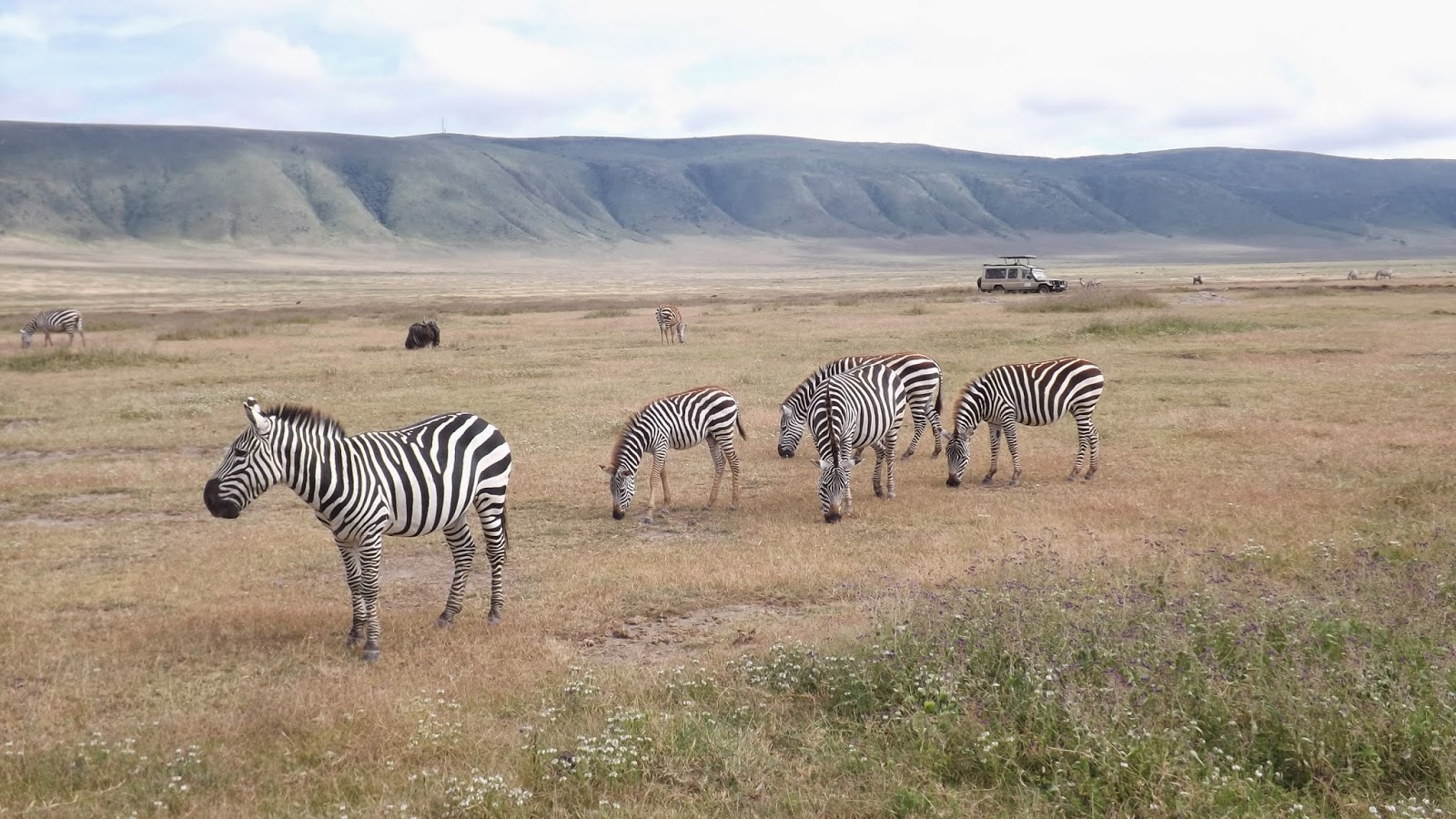The panoramic view of the crater from our room at the Ngorongoro Serena Lodge reveals mystic qualities, swathed in mist in the half light of dusk.
Morning reveals the nearly perfect game preserve of the Ngorongoro Crater, which in geologic terms is really a collapsed volcanic crater, or caldera. Three million years ago, a super volcano the size of Mount Kilimanjaro emptied its magma chamber and collapsed into itself forming the crater, 600 meters (1900) feet deep. It evolved into the perfect home for Africa's diverse animal population, harboring all major habitat types, permanent sources of fresh water and easily secured entry and exit points. Today nearly all of Africa's game animals are found within the Ngorongoro ecosystem.
Our guide, Steven Mziray and the perfect Toyota safari vehicle led us into the crater and a day of unparalleled game viewing. Toyota has clearly put Land Rover out of the off-road vehicle business in Africa.
Steven explained the reasons NC has been so successful at maintaining its wildlife herds. There are but two, extremely steep roads in/out of the crater. Ranger stations are positioned strategically around the rim to watch for poachers
There is no conflict with local farmers/herdsmen killing animals that wander out of the preserve, which is a problem in many National Parks. Early on the government was able to negotiate an agreement with local Masai herdsmen to share the crater. The Masai are allocated an area for grazing. In return, they move the cattle in and out each day, returning their cattle to the relative safety of their corrals or bomi, each day at sunset.

The habitat ranges from dry scrub and grasslands favoring certain plains loving antelopes and birds...
A Mouse bird...
...a very old Cape Buffalo, one no long following the herd. Steven says this old bull will soon end up lion food.
There are hundreds of zebras...
...troops of baboons...
many varieties of weaver birds, such as these Blagefeght Weavers
Africa's largest flying bird, a Kori Bustard, which can weight up to 40 pounds.
The crater also features some heavily wooded areas, with their accompanying animals that need the cover the woods provide.
...like this Long Crested Eagle
...or this big tusker.
Permanent water holes attracts everything, from the hippos and their look out, the Yellow-billed Stork, shore birds like the sacred ibis; to the herds of Cape Buffalo, wildebeest and zebra in the background.
You can find just about everything Africa has to offer in a single day's game drive in Ngorongoro without nearly the suspense or work finding game as we experienced in other game parks/preserves. We couldn't decide if it was due to the sheer numbers of animals, the open terrain or both, but it just seemed like there is something to look at no matter what direction you turn...
Whether you want to watch the antics of herd animals...
...or the solitary rhino.
And because of the difficulty poachers have, this is one place you have very good odds of seeing a rhino, like this fine specimen black rhino.
If you are a birder, you'll appreciate the variety of bird life, such as these Sacred Ibis...
or this wobble of Ostriches...
Gray Crested Cranes...
or this flamboyance of Flamingos wading in the alkaline lake at the center of the crater,
...and like all the animals, you'll want to be on the look out for lions from any of the three resident prides...
who'll either be digesting their latest meal or looking for their next one.
When you do see lions, this is commonly what you see...lions sleeping or being lazy, though we're told the correct interpretation of this behavior is "lions conserving energy."
I don't remember seeing so many raptors or carrion birds as we saw in one day, here a Steppe Eagle carries away a scrap from an earlier lion kill,
...and this Augur Buzzard looks for his next meal.
Warthogs enjoy a good roll in the mud.
Like I said, something to see everywhere you look like these Zebras appearing to walk on water.
If you ever plan a trip to Africa, try to include a day in the Ngorongoro Crater.
Tell them, Rod and Susan Raub sent you!
































Fascinating---Thanks
ReplyDeleteI'll be sure to do that.
ReplyDeleteSo enjoy this travel blog. I'm sensing the change in tone as your time in Africa lengthen and your experience deepens. God be with you.
ReplyDelete